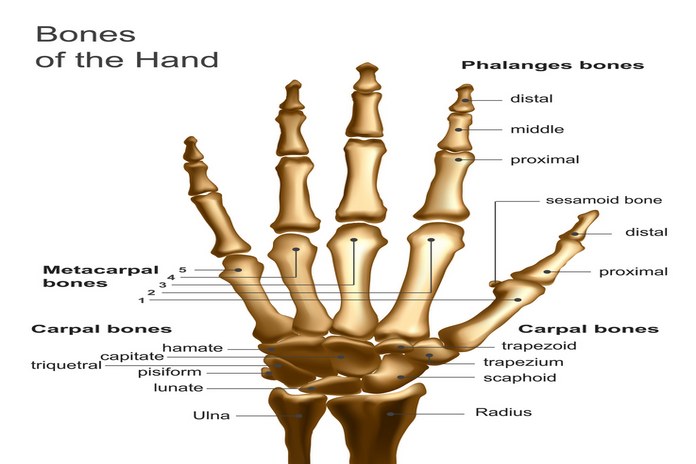What Do You Have in Your Hands?

Before going into detail about the different problems in your hands that trigger pain, it will be a good idea to talk about what you have in your hands. I mean anatomy, the tissues and structures you can find below the skin.
The human hand is an intricate and incredible piece of anatomy. It is made up of 27 bones, 29 joints, and dozens of muscles, tendons, and ligaments. Each one of these elements works together to allow us the extraordinary level of dexterity and strength that we have.
The bones of the hand include the carpals, which are the eight small bones that make up the wrist; the metacarpals, which are the five long bones in the palm of the hand; and the phalanges, which are the 14 bones in the fingers. These bones are held together by joints and muscles, which allow us to move our fingers in many different ways.
The hand muscles are divided into two main groups: the extrinsic muscles, which are connected to the hand by tendons and originate from elsewhere in the body, and the intrinsic muscles, which are found entirely within the hand. These muscles work together to allow us to make a wide variety of movements, including both gross and fine motor skills.
The tendons of the hand are also an important part of hand anatomy. They connect the muscles to the bones and allow the muscles to move the bones. The tendons are protected by a sheath of tissue called the synovium, which helps to reduce friction and allows the tendons to slide smoothly.
All of these different elements work together to allow us to use our hands in the amazing ways that we do. When one of them is damaged or doesn’t work as it should, hand pain is one of the symptoms you may experience. There are others, too.

